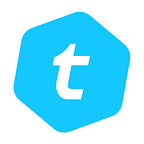Beyond India, opportunities for a better remittance experience abound in South Asia
The region enjoys the lowest average money transfer costs in the world, thanks in part to competition for the lucrative Indian market. But less popular corridors remain expensive, and some don’t offer digital options.
By: Jeff Quigley
Remittances to South Asia grew 6.1 percent in 2019, reaching an enormous US$122 billion, or 22% of the entire global market. That figure puts the region behind only East Asia and the Pacific (US$147B) for total remittance volume, with South Asia boasting the lowest average remittance costs in the world at 4.95 percent. This low cost can be attributed to India, the largest remittance recipient globally, where dozens of incumbent remittance providers from the Gulf and North America compete for a piece of the lucrative US$83 billion market. That incredibly high volume translates to lower transaction fees and more competitive foreign exchange rates, which are much harder to find in India’s neighboring countries.
“[C]osts are well over 10 percent in the highest-cost corridors [in South Asia] due to low volumes, little competition, and regulatory concerns,” states the World Bank’s most recent report on the state of global remittance trends. “Banking regulations related to AML/CFT raise the risk profile of remittance service providers and thereby increase costs for some receiving countries.”
Let’s take a deeper look at the following countries: Pakistan, Bangladesh, Nepal, and Sri Lanka. The following table shows their total respective inbound remittance markets (that is, how much they receive from abroad each year, in USD), based on the World Bank’s latest Bilateral Remittance Matrix.
Now let’s look at Pakistan’s top-10 inbound corridors:
With US$5.6 billion flowing from UAE to Pakistan each year, you’d expect the average cost to be reasonable — and it is. According to the World Bank, it costs just 2.63 percent on average to send US$200 through this high-volume corridor. That’s a total cost, including fee and FX margin, of just US$5.26. There’s still room for improvement (Telcoin, of course, is targeting just 2 percent to send a remittance in seconds), but this cost is already below the 3 percent target set by the United Nations’ Sustainable Development Goals for international remittance costs by 2030.
Next, let’s examine some corridors on the bottom of that list (where Telcoin has already gained regulatory approval for international remittance): Canada and Singapore. The average cost of sending US$200 from Canada to Pakistan is 5.04 percent, or US$10.09. Sending US$200 from Singapore, on the other hand, will cost 7.84 percent on average, or US$20.37. That’s above the global average of roughly 7 percent, with significant room for improvement.
Notably, all nine of the incumbent remittance companies serving the Singapore-Pakistan corridor limit the beneficiary to accepting a bank transfer (which requires having a bank account in the first place) or picking up cash at a physical shop (impossible for those on lockdown and inconvenient — plus potentially dangerous — for everyone else). None offer remittance into a digital wallet.
Keep in mind that the World Bank only provides competitive data for high-volume corridors, or from major sending countries. For example, Australia sends US$216 million to Nepal each year — the 8th most valuable inbound corridor to Nepal — but the World Bank doesn’t offer competitive data for that corridor (though it does offer data for UAE-Nepal, the 9th most valuable). This likely means that there are more companies vying for customers sending from UAE to Nepal, despite a greater need for transfers from Australia (where there are fewer competitors charging high fees).
South Asia is a major area of focus for Telcoin. While we’re actively engaging partners in market-leading India, we have cultivated several additional partnerships in the region that we’re excited to share more about in the future. Despite much lower average costs than transfers to Sub-Saharan Africa, there are plenty of opportunities to drive costs even lower while serving corridors that may not have a fully-digital option available. This is key for promoting financial inclusion — as South Asia also has some of the lowest traditional banking penetration rates in the world. According to the World Bank, half of all unbanked adults worldwide live in just seven countries, with three of them (India, Pakistan, and Bangladesh) located in South Asia. By working with telecom and mobile money partners, Telcoin will be able to reach a much larger segment of the population than services that rely on banks.
Telcoin. Send money smarter.
